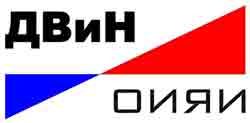10.04.2015
Профессиональная подготовка операторов комплекса ДВИН-1
02.02.2015
Началась профессиональная подготовка операторов комплекса ДВИН-1
22.12.2014
The testing of liquid explosives detector has successfully passed at the Vnukovo airport.
24.09.2014
Prize of the V.P. Dzhelepov, JINR, Dubna.
18.08.2014
New version 3.0 of the explosives detection software for the
DVIN-1
25.07.2014
New expert report on the operation conditions for the portable DVIN-1 system was prepared by The Ramzaev Research Institute of Radiation Hygiene–Rospotrebnadzor Head Test Center.
09.06.2014
At the end of May the tagged neutron method was tested in the rapid elemental analysis of typical rocks on the Olkhon geodynamic test ground on the bank of Lake Baikal.
25.07.2014
The Ramzaev Research Institute of Radiation Hygiene–Rospotrebnadzor Head Test Center for products containing sources of ionizing radiation–issued a new expert report on the operation conditions for the portable DVIN-1 system for detection of explosives using the tagged neutron technique. The new expert report is aimed to meet the changes in the regulatory system governing the work with sources of ionizing radiation.
In particular, it is clearly stated that the use of tritium, which is part of the neutron generator target, represents no hazard: "Since tritium is a pure beta source emitting beta particles with the maximum energy of 18.6 keV that are completely absorbed by the shell of the tube, the dose rate on the surface of the neutron tube (when the generator is off) and at a distance of 1 m from it does not differ from the background dose rate, which meets the sanitary norms and regulations SanPiN 2.6.1.1015-01 and OSPORB-99/2010 requirements for sealed radioactive sources exempt from control. The activity of the tritium source is less than 0.01 of its minimum licensed activity, it falls into potential radiation hazard category 5, and handling of it does not require licensing by the Federal Service for Ecological, Technological, and Nuclear Supervision."
Another important change in the new expert report applies to the running detector safety zone for the operator and the population. Now the safety zone radius is determined to be 10 m. It is important to understand that the radius of the safety zone for the population is not dictated by the possibility of taking an annual tolerance dose of 1000 µSv but rather by a negligibly low radiation risk dose of 10 µSv. A man can watch the operation of the DVIN-1 six times, and if he is more than 10 m away, his accumulated dose will not exceed the negligibly low radiation risk dose.
The full text of the expert report is on our website.




